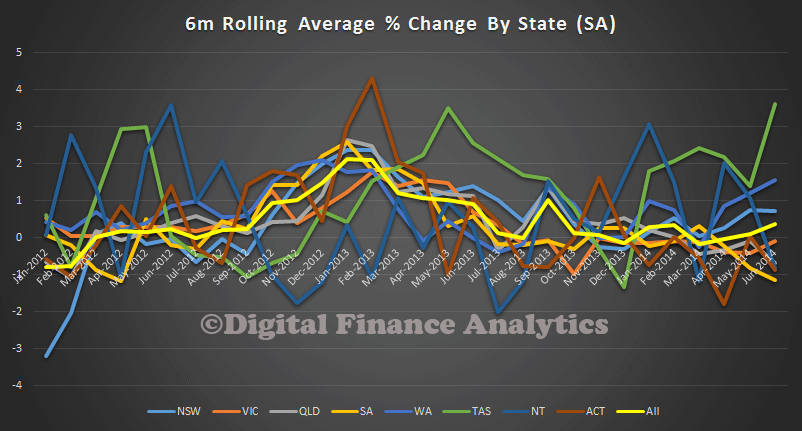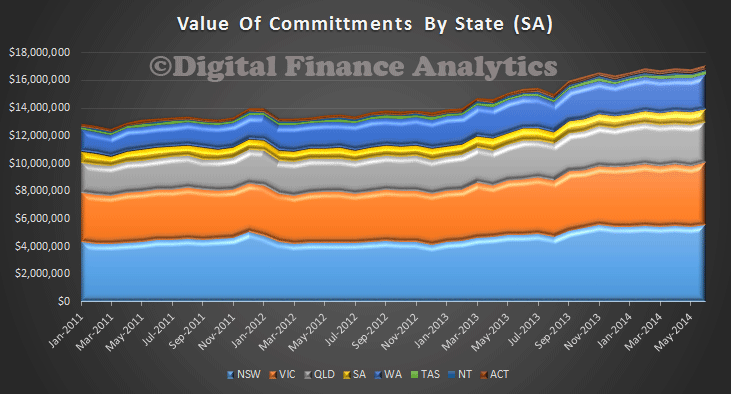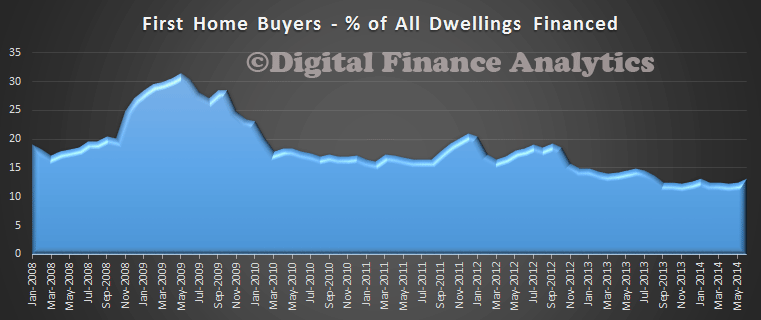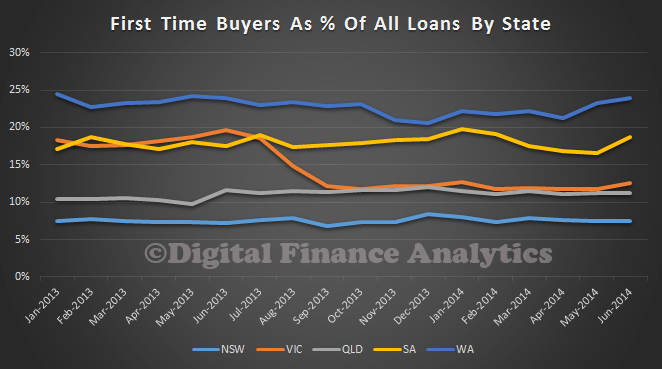The ABS published their housing finance data today to June 2014. In seasonally adjusted terms, the total value of dwelling finance commitments excluding alterations and additions rose 1.0%. The value of commitments grew faster than the number of transaction, so the average loan size is increasing.
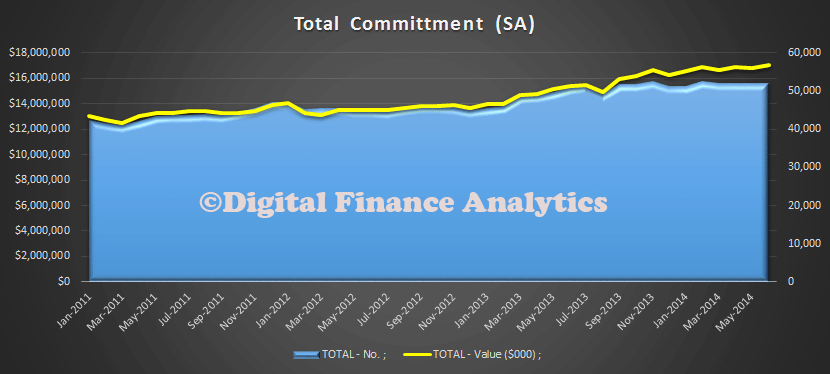 Growth in NSW, WA and TAS was faster than the national average.
Growth in NSW, WA and TAS was faster than the national average.
We see the momentum spread across the states, with WA and NSW making the largest growth contribution. VIC and QLD grew more slowly.
First time buyers are still at historic lows. In original terms, the number of first home buyer commitments as a percentage of total owner occupied housing finance commitments rose to 13.2% in June 2014 from 12.6% in May 2014.
State variations are quite marked. NSW has the lowest proportion of first time buyers, WA the highest. The VIC data shows the impact the removal of some first time buyer incentives in 2013.
Investors loans grew faster than owner occupied loans. This is consistent with the results from our household research.
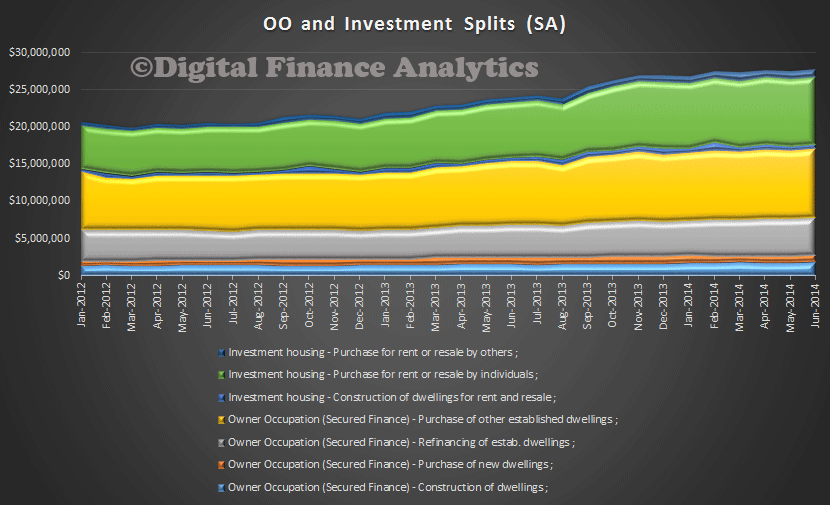 The splits, after removing refinance of existing loans are 47% investment loans and 53% owner occupied loans.
The splits, after removing refinance of existing loans are 47% investment loans and 53% owner occupied loans.
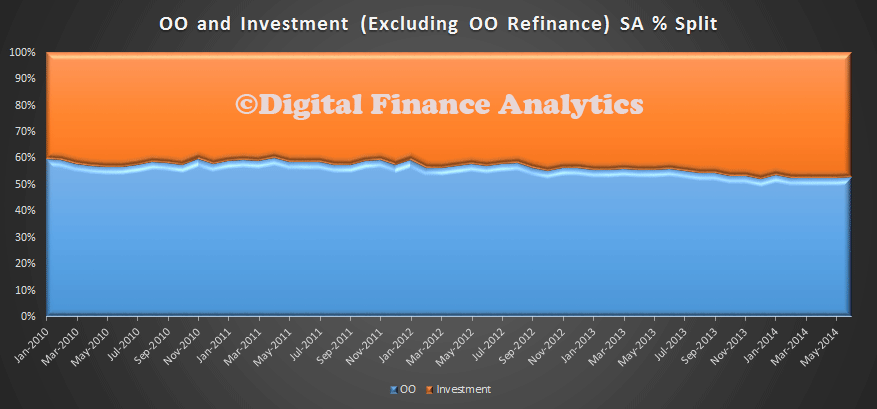 So, momentum continues, the trends are set, growth in the investment sector, first time buyers excluded, and overall growth stimulated by rising prices. The RBA quarterly statement on monetary policy, issued today, indicates they are comfortable with the current position:
So, momentum continues, the trends are set, growth in the investment sector, first time buyers excluded, and overall growth stimulated by rising prices. The RBA quarterly statement on monetary policy, issued today, indicates they are comfortable with the current position:
One area where there has been a marked improvement is dwelling investment, which grew strongly in the March quarter and is clearly in an upswing. The increase in dwelling investment is being underpinned by the ongoing strength in the established housing market. Housing price inflation over 2014 to date has not been as rapid as it was over the second half of 2013, but prices continue to rise. Loan approvals are higher than they were a year ago, but have been little changed since late last year. At this level, they are consistent with growth in housing credit stabilising at a rate that is a bit faster than income growth, although the growth of investor credit has continued to outpace that of owner-occupiers. The high rate of housing price inflation has underpinned strong growth in standard measures of household wealth. Along with the very low level of interest rates, this has seen consumption growing a little faster than household income, leading to a gradual decline in the saving rate over the past 18 months or so. Nevertheless, after picking up through 2013, consumption growth looks to have slowed in the first half of this year, with weaker retail sales growth and consumer sentiment falling to below-average levels. It remains to be seen whether this slower growth of consumption is temporary. Indeed, a timely measure of consumer sentiment has rebounded recently to be back above average.
I am less sure, because we are banking on larger loans supporting the growth in house prices, despite record low interest rates, and a significant rise in investment loans. There are risks in this scenario.

